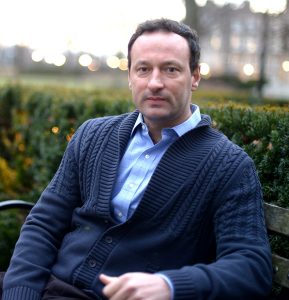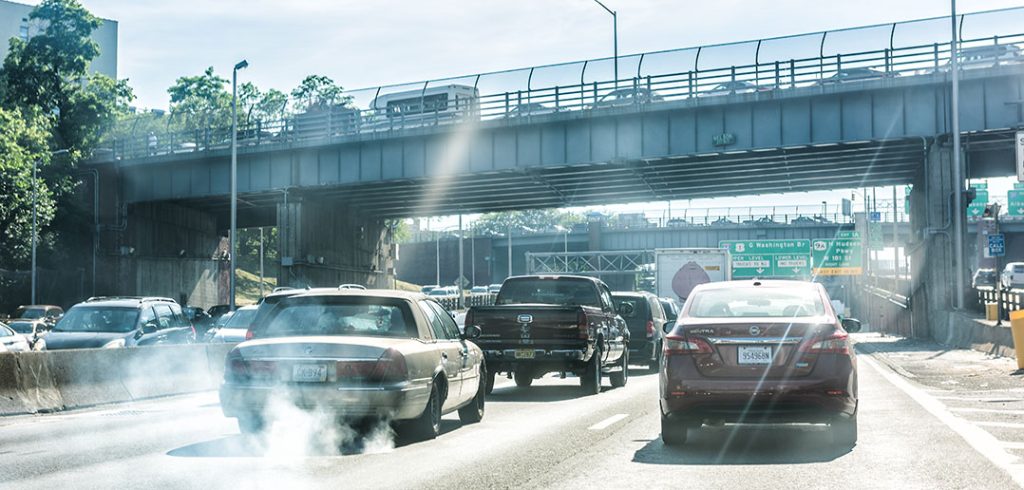During and after the COVID-19 pandemic, researchers noticed that people living in areas with higher air pollution were likely to suffer from more severe symptoms of the virus.
But was that air pollution actually causing those symptoms?
In a new study published this month, Marc Conte, Ph.D., professor of economics at Fordham, says no.
“There’s no question that air pollution is a public health threat, but measuring the impacts of air pollution on humans, whether it’s cognitive ability, physical health, or mental health, is pretty challenging,” said Conte.
Correlation vs. Cause

The challenge, he said, is overcoming the temptation to put more weight behind observational studies than they deserve. A researcher might collect data and determine that a large number of people with dementia have bad teeth. But that doesn’t necessarily mean that bad teeth cause dementia.
“The public health researchers who are conducting this work know that they’re studying correlations, but when the media reports on these studies, the layperson who consumes that information might not necessarily know that it’s a correlation and not causal,” he said.
For the study, “Observational studies generate misleading results about the health effects of air pollution: Evidence from chronic air pollution and COVID-19 outcomes,” which was published in the journal PLOS ONE, Conte and his research partners paired data from two different sources that were collected between March and September 2020.
The first source was health data gathered from U.S. Census tracts in New York City, whose geographic centers are less than 500 meters from a highway. That narrowed the number of tracts studied down to about 800 out of a total of 2,168 in New York City. The researchers then compared that to data collected from the New York City Community Air Survey, a network of 100 air quality monitors maintained around the five boroughs.
That extensive network, which augments a much smaller number of monitors in New York City maintained by the federal government, allowed researchers to compare communities that are downwind from highways with those that are upwind. If poor air quality were responsible for more severe COVID symptoms, communities downwind would be expected to fare worse than their upwind neighbors.
Findings
Conte said that across the 800 census tracts, there was no statistically significant difference between those who were downwind and thus had poorer air quality and those who were upwind and therefore had better air quality. Other factors, such as income differences, access to health care, and the ability to work remotely during the pandemic, are more likely culprits for severe symptoms, he said.
In addition, many residents in these areas were unable to leave New York City at the height of the pandemic, either because they lacked the means to do so, or their jobs required that they work in person. The inability to engage in this kind of “defensive behavior,” resulted in higher exposure to those infected with the virus.
“That fact suggests this issue of environmental justice extends beyond the fact that certain communities are located near more pollution sources,” he said.
“It’s actually a more systemic problem that lower-income people are employed in positions that could not accommodate remote work, with many designated ‘frontline’ workers,” he said, or simply didn’t have the resources to leave the city.
None of this means that researchers should cease conducting observational studies, especially during health emergencies like the pandemic, Conte said. Rather, he hopes the study will further elevate the notion that “correlation does not equal causation” in the public consciousness.
More Data = Better Outcomes
A second takeaway from the study is the importance of maintaining a large network of air quality monitors, which together are able to generate finely detailed data. In fact, Conte’s team also conducted a second experiment on the same topic using only data collected by the seven monitors maintained around New York City by the Environmental Protection Agency, without any input from the New York City Community Air Survey.
The results were much closer to the observational studies that had been done and might have led readers to believe that air pollution and severe COVID symptoms are explicitly linked to each other.
“As we think about things like wildfires and other sources of air pollution, these problems are becoming more and more intense,” said Conte.
“For us to be able to take measures that can reduce the public health outcomes and the threats to public health, we need to have more information. We need to invest more.”

